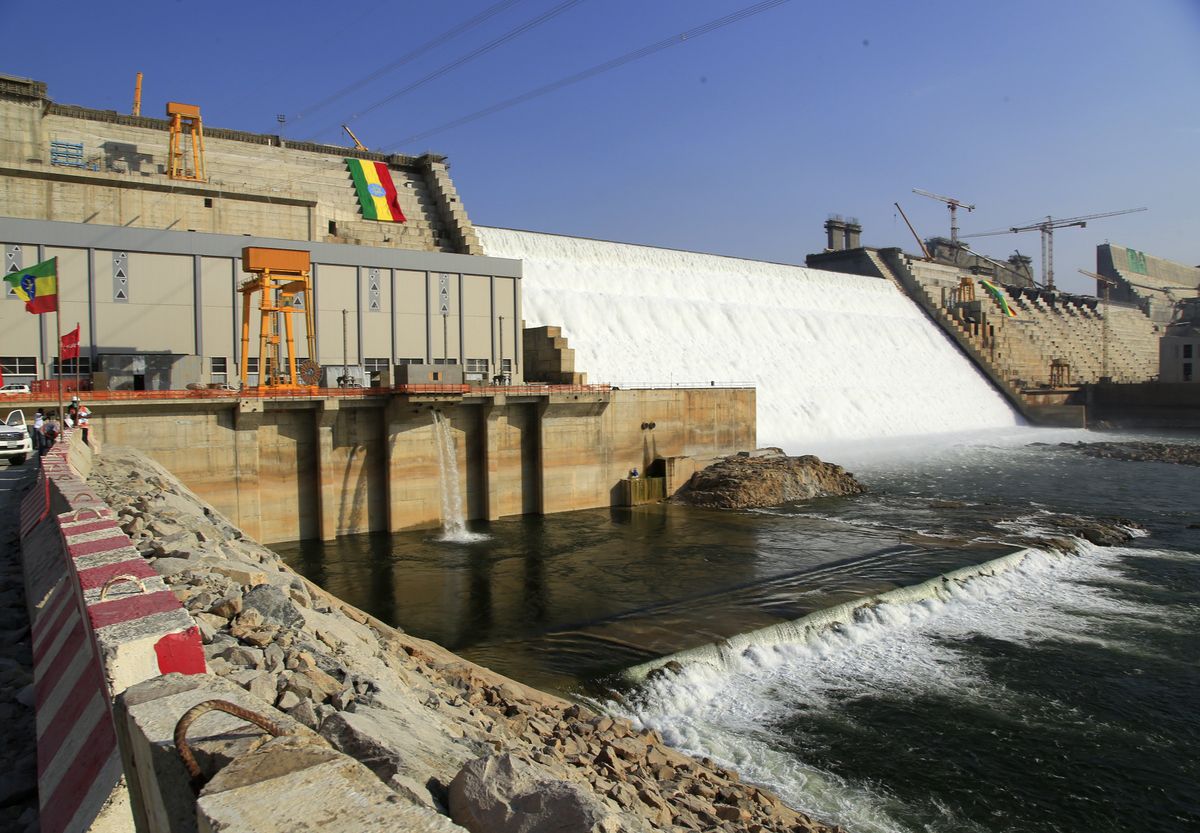As of this writing, the 74-cubic-kilometer reservoir for the Grand Ethiopian Renaissance Dam (GERD) continues to fill, a process that will last into the second half of this decade. Perhaps Africa’s highest-profile hydropower project ever, GERD will produce more than 6 gigawatts of electricity when it’s all done.
GERD is far from alone. At least 100 GW of hydropower is proposed or in progress across the continent. In addition to shielding riparian communities from flooding and aiding food security by irrigating surrounding farmland, dams can provide fossil-fuel-free electricity to populations that need access. Africa, home to four of the world’s 15 largest river drainage basins—the Nile, the Niger, the Congo, and the Zambezi—has plenty of opportunity to build on them.
Even so, hydropower faces growing threats. Climate change menaces the rivers that turn dams; moreover, hydro faces economic competition from ever cheaper solar and wind power. The result, researchers predicted in the journal Science on 11 August, is that over one-third of Africa’s potential future hydro isn’t cost-optimal.
Even in a future where cheap wind and solar spread across Africa and the globe, dams may still play a key role in a diverse renewable power supply.
Hydro probably won’t become obsolete. However, the authors say that large dams will need to become part of larger systems to truly succeed.
“On the one hand, dams are an opportunity…on the other side, we also want to show that these types of big investments in hydropower have to be done with particular attention and care,” says Andrea Castelletti, an environmental planner at the Polytechnic University of Milan, in Italy, and one of the paper’s authors.
The researchers modeled future scenarios out to 2050, extrapolating power demand from projected GDP and population growth. The researchers then examined three climate scenarios: an optimistic scenario limiting; a “business-as-usual” scenario; and a rather dystopian scenario with exploding growth in coal usage. Climate change impacts rivers by altering when and where the rains come—and by bringing new extreme weather for infrastructure to last.
But even if rivers flow uninterrupted, hydro faces economic head currents. Solar and wind prices have plummeted in the last several decades, while traditional hydropower—large dam projects are far less flexible than more modest solar or wind farms—remains quite costly. The authors acquired and compared cost data for hydro, solar, and wind projects to project them into the future.
They found that an optimal strategy to deliver the most clean energy at the least cost often excluded dams after 2030. Even under the most hydro-optimistic scenario, 32 percent of Africa’s progressing or proposed hydropower will not be cost-optimal; that proportion rises to 60 percent in less friendly conditions.
Given these numbers, are dams in Africa doomed to a future of becoming large, crumbling megaliths towering over landscapes bright with electric lights that find their power elsewhere? Not necessarily; even in the most dam-averse futures, dams may still serve critical purposes. “I don’t think we can conclude that individual projects are not still potentially viable,” says Casey Brown, an environmental researcher at the University of Massachusetts, who was not one of the paper’s authors.
Even in a future where cheap wind and solar spread across Africa and the globe, dams may still play a key role in a diverse renewable power supply. A grid reliant on solar and wind requires storage for moments when the sun is occluded and the winds are calm. That storage could come in the form of batteries; it could also come in the form of dam reservoirs, which might serve as natural batteries. Operators can open up more sluices in times of need.
“[Dams] would remain particularly viable in cases where they could either provide cheap baseload power…or provide flexibility and good seasonal synergies with solar and wind power,” says Sebastian Sterl, an energy researcher at the World Resources Institute and another of the paper’s authors.
Analysts say that truly valuable hydro will rely on international cooperation between closely neighboring countries that may have vastly different electrical generation mixes. Today, energy analysts divide sub-Saharan Africa into four “power pools”—the largest of them in the south, accounting for most of the region’s power generation alone. Strengthening these power pools and binding them more tightly together may allow solar and wind to take over when hydro falters, and vice versa.
A 2022 study, conducted by researchers from the Kigali Collaborative Research Center, in Rwanda, and Carnegie Mellon and the University of Washington, in the United States, concluded that tighter power pools can shield hydro capacity from some of climate change’s harms. Sterl, Castelletti, and their colleagues concur.
The authors are now looking at adding other factors to their model: political stability, for instance, which might repel global investment; and the potential for floating solar panels atop reservoirs, which might serve as a model for adding electric generation to existing dams.


